
Hobart ( HOH-bart; is the capital and most populous city of the island state of Tasmania, Australia. Located in Tasmania's south-east on the estuary of the River Derwent, it is the southernmost capital city in Australia. Despite containing nearly half of Tasmania's population, Hobart is the least-populated Australian state capital city, and second-smallest by population and area after Darwin if territories are taken into account. Its skyline is dominated by the 1,271-metre kunanyi / Mount Wellington, and its harbour forms the second-deepest natural port in the world, with much of the city's waterfront consisting of reclaimed land. The metropolitan area is often referred to as Greater Hobart, to differentiate it from the City of Hobart, one of the seven local government areas that cover the city. It has a mild maritime climate.
The history of Tasmania begins at the end of the Last Glacial Period when it is believed that the island was joined to the Australian mainland. Little is known of the human history of the island until the British colonisation of Tasmania in the 19th century.

Davey Street is a major one way street passing through the outskirts of the Hobart City Centre in Tasmania, Australia. Davey street is named after Thomas Davey, the first Governor of Van Diemen's Land. The street forms a one-way couplet with nearby Macquarie Street connecting traffic from the Southern Outlet in the south with traffic from the Tasman Highway to the east and the Brooker Highway to the north of the city. With annual average daily traffic of 37,200, the road is one of the busier streets in Hobart.

Mount Nelson is a mountain suburb located on the southern boundary of the city of Hobart, Tasmania, Australia. Positioned to the south of Hobart's CBD, Mount Nelson varies in elevation with its summit reaching 351 metres (1,152 ft) above sea level, offering panoramic views of the scenic Derwent estuary and surrounds.
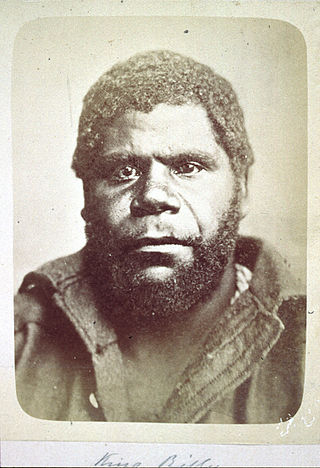
William Lanne, also spelt William Lanné and also known as King Billy or William Laney, was an Aboriginal Tasmanian man, known for being the last "full-blooded" Aboriginal man in the colony of Tasmania.

Frenchmans Cap is a mountain in the West Coast region of Tasmania, Australia. The mountain is situated in the Franklin-Gordon Wild Rivers National Park.
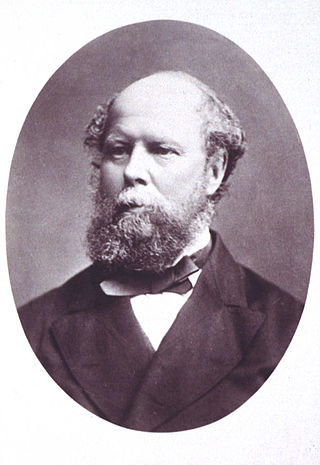
William Lodewyk Crowther FRCS was a Tasmanian politician, who was Premier of Tasmania from 20 December 1878 to 29 October 1879.
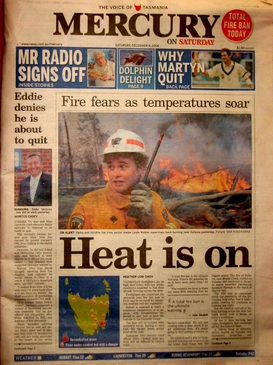
TheMercury is a daily newspaper, published in Hobart, Tasmania, Australia, by Davies Brothers Pty Ltd, a subsidiary of News Corp Australia, itself a subsidiary of News Corp. The weekend issues of the paper are called Mercury on Saturday and Sunday Tasmanian. The current editor of TheMercury is Craig Herbert.
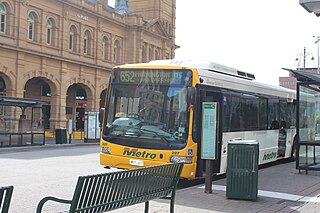
The Hobart Bus Mall is the main urban bus interchange for Metro Tasmania in the Hobart central business district. Situated on Elizabeth Street, it serves daily commuters from suburbs, nearby cities, and towns including Clarence, Glenorchy, Richmond, Cambridge and Kingborough. The interchange spans Elizabeth Street between Macquarie and Collins streets, with additional bus stops at Franklin Square and one on Liverpool Street near the Elizabeth Street Mall's north end. The interchange is within 500 metres (1,600 ft) of connecting coach services on Murray Street, ferry services and airport bus services at Brooke Street Pier.

The Tasmanian Museum and Art Gallery (TMAG) is a museum located in Hobart, Tasmania. The museum was established in 1846, by the Royal Society of Tasmania, the oldest Royal Society outside England. The TMAG receives 400,000 visitors annually.
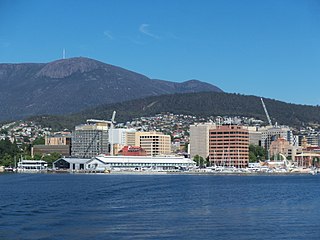
The Hobart City Centre is a suburb surrounded by metropolitan Hobart, which comprises the original settlement, the central business district, and other built-up areas. It is the oldest part of Hobart and includes many of the city's important institutions and landmarks, such as Parliament, the Supreme Court, Franklin Square, the Elizabeth Street Mall, the Royal Hobart Hospital, the Theatre Royal, Odeon Theatre, State Library, the NAB Building, the Museum, and the Cenotaph. The city centre is located in the local government areas of the City of Hobart.

The Hotel Grand Chancellor Hobart is a twelve-storey hotel located on the waterfront of Hobart, Tasmania, Australia.

Henry Hunter (1832–1892) was a prominent architect and civil servant in Tasmania and Queensland, Australia. He is best known for his work on churches. During his life was also at various times a state magistrate of Tasmania, a member of the Tasmanian State Board of Education, the Hobart Board of Health, a Commissioner for the New Norfolk Insane Asylum and President of the Queensland Institute of Architects.
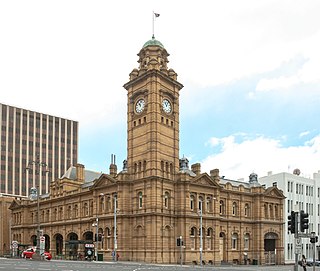
General Post Office is a landmark building located on the corner of Elizabeth Street and Macquarie Street in Hobart, Tasmania, Australia. It stands next to the former Mercury Building and has served as the headquarters of the Tasmanian Postal system since its construction in 1905, though mail processing has now been moved to Glenorchy.

Ingle Hall is a landmark building in Hobart, Tasmania on the corner of Macquarie and Argyle Streets. It has served numerous purposes over its history and is vacant; it was most recently used as The Mercury print museum. It is unknown when the building was built as it predates any government record holding by the state of Tasmania, which began in 1822. It is named for John Ingle, one of the two possible first inhabitants of the building.

Murray Street is one of four north-west roads within the Hobart City Centre (CBD). The street is named for Captain John Murray, commandant at Hobart Town, by Lachlan Macquarie. One of Hobart's original seven streets, Murray Street was formalised by surveyor James Meehan (1774-1826) on 25 November 1811.
William Percival Brownell was an Australian politician. He was a member of the Tasmanian House of Assembly from 1903 to 1909, representing the electorate of Franklin.
The Prince of Wales Theatre was a theatre on Macquarie Street, Hobart, Tasmania from 1910 to 1987.
Taroona Beach is a popular beach destination along the River Derwent in Taroona, Hobart, Tasmania. The south facing beach looks directly out to Storm Bay and the Tasman Sea, with views of the Derwent estuary, the City of Clarence on the eastern shore, Opossum Bay, South Arm, the Alum Cliffs and northern tip of Bruny Island. Taroona Beach is situated between Hinsby Beach and Crayfish Point, home of the Fisheries and Aquaculture Centre for the Institute for Marine and Antarctic Studies. Taroona Beach contains a boat ramp and is backed by Taroona Park which contains bathroom facilities, a skate park, scout hall, the Taroona Tennis Club, and the Taroona Bowls and Community Club.

Situated in the state capital of Hobart, Tasmania, Australia, the former Hobart railway station was once the largest railway station on the Tasmanian Government Railways (TGR) network. Located on the Main Line, it provided passenger train services to Hobart's northern suburbs and served as the central terminus for the Tasman Limited, a limited express service linking Hobart, Launceston and Wynyard.




























